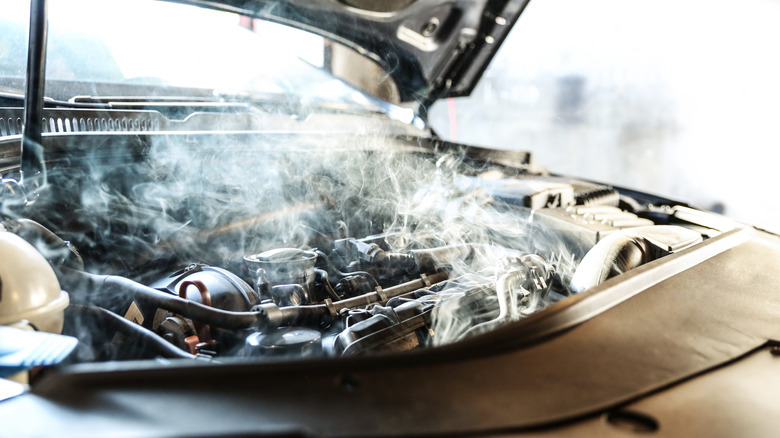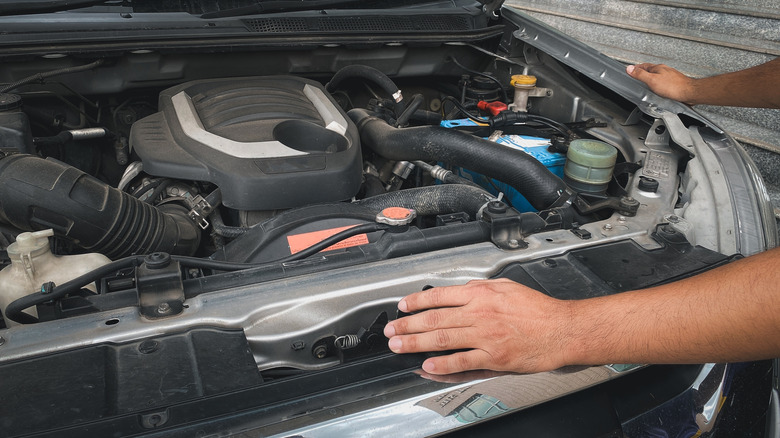What Does It Mean When A Car Is Running Lean?
Ever been told your car is running lean? It means the engine is receiving too much air or not enough fuel during combustion. You see, your car's engine needs a very specific balance of air and fuel to run at its most efficient. (That's around a 14.7:1 ratio by weight for gasoline engines, which you might hear referred to as the stoichiometric ratio.) When this very precise balance is thrown off by too much air, you're left with what's called a lean condition.
Although it might not sound like a big deal, running lean can have serious consequences on your engine, ranging from reduced performance to complete engine failure if left untreated. Understanding the causes, symptoms, and solutions to a lean-running engine can help you prevent long-term damage and expensive repairs down the line.
Luckily, a lean-running engine tends to show several warning signs. Drivers might notice a decrease in engine performance, hesitation during acceleration, or even engine knocking (which can cause severe internal damage over time). Another common symptom is the notorious check engine light, along with lean condition trouble codes such as P0171 or P0174. These codes let mechanics know that the engine control unit (ECU) has had to adjust the fuel system to compensate for the lean conditions.
Possible causes of a lean engine
There are a number of issues that can cause a car to run lean. Most of them are related to problems in the fuel delivery system or unmeasured air entering the engine. If the fuel pump fails or if there's a blockage in the fuel filter, fuel pressure can drop below the necessary threshold to maintain the correct mixture. Dirty or clogged fuel injectors can also prevent the right amount of fuel from reaching the combustion chamber. (Always keep those fuel injectors clean!)
Beyond fuel supply issues, air seepage — either due to vacuum leaks in hoses, intake manifolds, or gaskets — can also introduce an unnecessary amount of air into the system and make the engine run lean. Another frequent cause is a faulty mass airflow sensor (MAF), which can send the wrong airflow data to the ECU and throw off the fuel injection. Likewise, malfunctioning sensors (like the intake air temperature sensor, manifold absolute pressure sensor, or the exhaust gas recirculation sensor) can also skew the ECU's fuel calculations.
Diagnosing and fixing a lean engine
When diagnosing a lean engine, technicians will start by checking the vehicle's diagnostic codes through an OBD-II scanner. These codes give useful hints about which system or sensor might be causing the issue. (For instance, a P0171 code typically suggests a lean condition on bank one of the engine, while P0174 refers to bank two.) The next steps are to check fuel pressure, inspect vacuum lines for leaks, and analyze the performance of critical sensors like the MAF and oxygen sensors. Smoke tests can also be used to locate vacuum leaks that might otherwise be invisible.
The repair process will vary based on the diagnosis. It could involve replacing a fuel pump, cleaning or swapping out the MAF sensor, fixing vacuum leaks, or updating engine software based on Technical Service Bulletins (TSBs) that address known issues for specific vehicles.
No matter what the fix, it's incredibly important to fix a lean-running engine as soon as possible. Running lean for too long under these conditions can cause engines to run hotter, making it much more likely for you to burn valves, crack pistons, or warp cylinder heads. Not to mention, burning the wrong air-fuel mixture can lead to higher levels of harmful emissions. Regular maintenance, including timely replacement of air filters, fuel filters, and sensors, can prevent many of these problems before they even begin.


